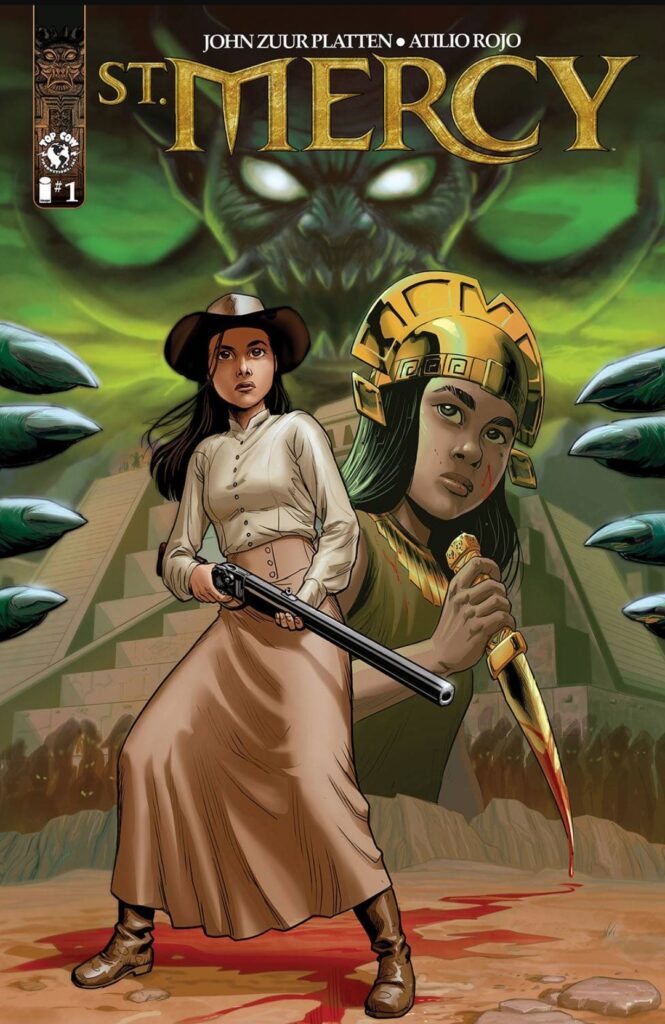St. Mercy # 1
Image Comics new series St. Mercy can best be viewed as a tale of two young women with similar purposes. Living 500 years apart you would thing their lives would be entirely different. Writer John Zuur Platten creates a parallel between the two using their faith and religion. This is a story that draws attention to the many S’s that occur when dealing with these two topics.
Written by: John Zuur Platten
Arts by: Atilio Rojo
Letters by: Troy Peteri
Beginning the tale in the Peruvian Mountains the story introduces us to Toctollissica. A teenager, who by modern standards would have her whole life ahead of her. Instead she is a sacrifice. As part of the Capacocha she is an offering meant to ensure the prosperity of her village. Platten writes an excellent opening that conveys the beauty and brutality of this ancient tradition. The writer ensures we understand they are not wholly savage as the acts are conditional if not compassionate. The Capacocha is a bargain with a God, Supay. And to most of the villagers the shaman is gambling with all their lives by offering Toctollissica.
In 1871, in Arizona, a young woman named Mercy serves at the Ono Church. Along with her father she offers hope and salvation to those living in this desolate country terrain. Although she seems to live a comfortable existence not everyone approves of her presence. While inviting Mrs. Marcus to attend service on Sunday Mercy finds almost the same amount of scorn of being unworthy that Toctollissica received. This is one way this story seems to hint at a deeper connection between the young women. Still the only hint of savagery in her life is the fear of robbers living and looting the wild West.
It is not only in how they live that Toctollissica and Mercy seem to be connected. Does their similar ancestry hint at a connection by lineage? is this story about a debt left unpaid?
The alternating timelines allow artist Atilio Rojo to work with two distinct sets of colors and tones. There is no denying the jungles of Peru and the Arizona desert are warm even hot locations but they are somewhat different. The artist portrays the difference in heat index in these climates accordingly. The portions that take place in Peru use colors that have a tropical rain forest feel. During the parts of occurring in Arizona the tones become drier and more arid. The characters and visuals during the stage coach robbery were some of the most standout scenes of this issue. The violence during this portion shows how neither the ancient world nor modern times are free of blood, brutality and savagery.
I am excited about the hints of the supernatural this comic offers. Additionally it amazes me how it casually touches on some complex faith based elements. Matters of service, sacrifice and even salvation make an appearance in this opening issue. These seem to be the key components in both of these young women’s lives. But there is one more connection that I sense from these two women born years apart. In St. Mercy # 1 they both appear to be serving with selfish intent.
Score: 8.6


